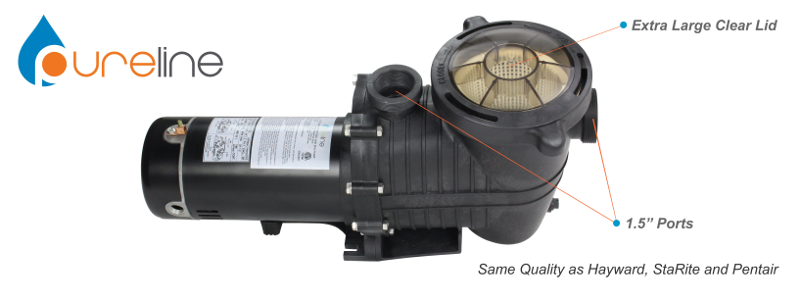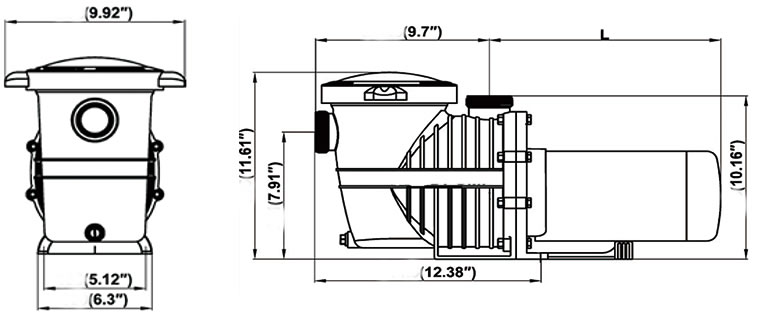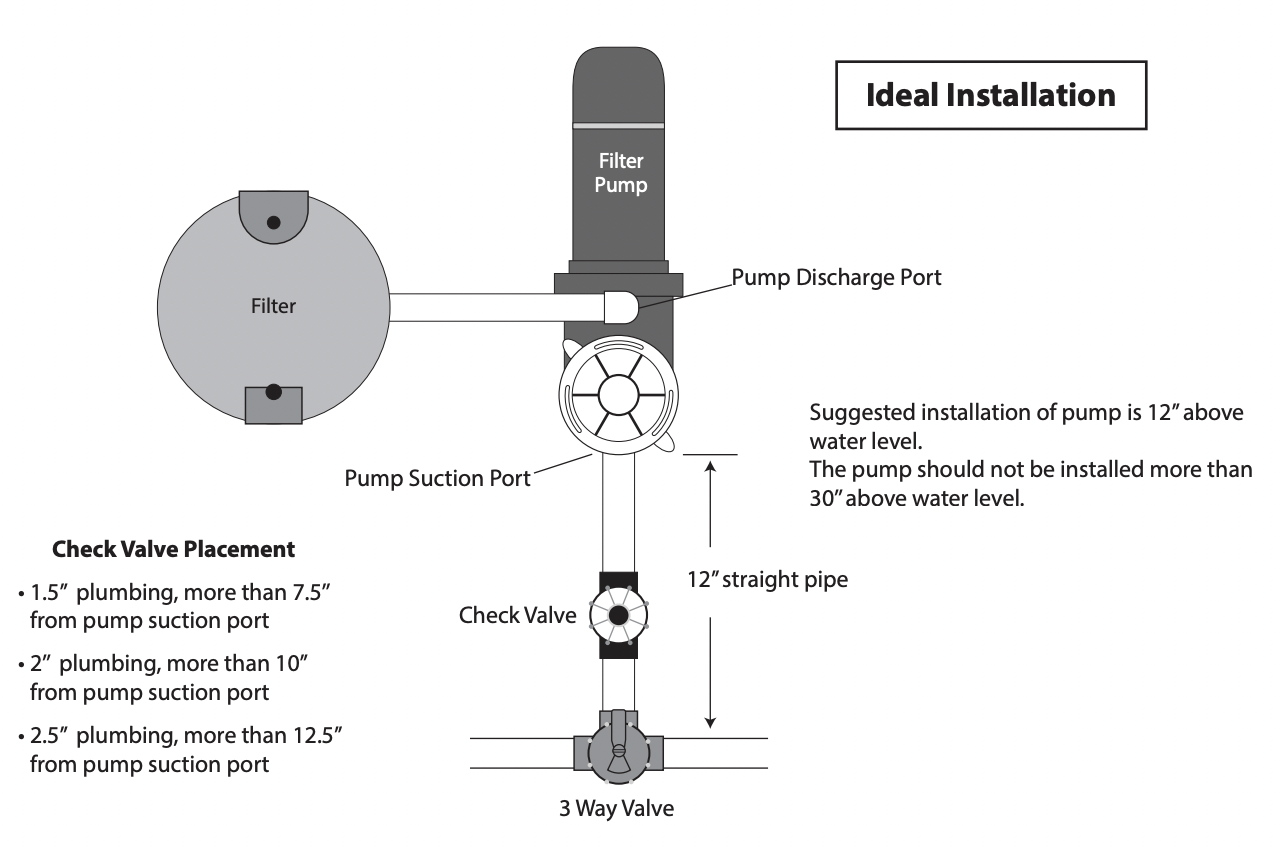$444.00
By Pureline
Model # PL1609
Warranty 1 Year

Comparable Quality to Hayward®, Pentair®, Sta-Rite®, Jandy®, Jacuzzi® & Waterway®!
The PureLine Pure Flow pool pump is one of our favorite pumps. This work-horse is designed to be energy-efficient, quiet, dependable and all of this at a great price.

Note: NOT California or New York Title 20 Compliant.
California and New York Title 20 Compliant Option:
Variable Speed - PL2515
Variable Speed - PL1616
Click here for the Above Ground Pool Version of this Pump
Specifications:
Applications
Features
The Pureline Pure Flow is a great fit for the following pools.
The Pureline Pure Flow is NOT a good fit for the following pools.
Dimensions
Pump Curve
Installation Suggestions:
When possible, we suggest installing a check valve on the suction side of the pump. The installation of a check valve will help re-priming your pump as it will keep water in your pump basket and make for easier start-up.
Pump Plumbing
There are many different ways a pool pump can be plumbed due to space requirements, existing plumbing, water features, etc... Due to these scenarios, we have listed some general best practices to adhere to when plumbing a pool pump.
Pool Plumbing Best Practices
Check Valve Placement
1.5” Plumbing - Check valve not to be placed within 7.5” of pump suction port
2” Plumbing - Check valve not to be placed within 10” of pump suction port
2.5” Plumbing - Check valve not to be placed within 12.5” pump of the suction port



Piping
Example: A 2.5” pipe requires a 12.5” straight run in front of the suction inlet of the pump. This will help the pump prime faster and last longer.
Note: Do NOT install 90-degree elbows directly into the pump inlet or outlet.
Disclaimer:
All manufacturers’ names, brand names, trademarks, images, symbols, descriptions, and part numbers are used herein for reference purposes only.
How many hours per day should I run my pump?
Reply
There are many factors to consider; bather load, gallons of water, pump horsepower, type and size of filter just to name a few. A good guideline is 8-10 hours a day. On the cooler days and early and late season, you can cut the run time down to 4-6 hours because there is usually less swimmers and cooler water requires less chemicals. In peak season, when it is the hottest, raising the run time to 10-12 hours per day will help to keep the pool clean and circulating during it’s time of heaviest use.
Reply